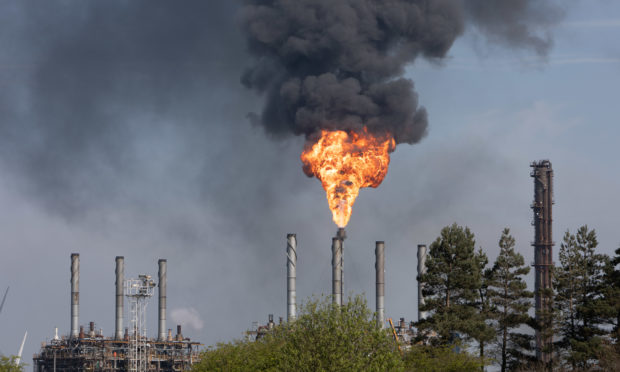As a young lad, I remember going out the front door of my home in Kirkcaldy, looking westwards and seeing the sky pulsating with a reddy orangey tinge to it.
It was pretty scary back then, but my parents reassured me that it was “just” Mossmorran, the Fife Ethylene Plant near Cowdenbeath, doing some planned flaring.
So, as a Fifer born and bred, the sight of the huge orange flame has become something of the norm as the years have gone on. Something not to worry too much about.
Flaring is an established industry practice, we’ve been told, essentially producing water and carbon dioxide from the combustion of Ethylene and steam, and it’s a practice that is essential to keeping the plant safe.
However, the sight of the giant flame and with it huge plumes of black smoke last weekend would have done little to reassure local residents whose patience appears to have finally run out with the ageing plant.
People sitting on Portobello Beach could see the black ‘reek’ through the hazy sunshine of the Easter weekend, and the Mordor-like beacon could be seen from much further afield.
And that, as much as we’re told otherwise by those ‘in the know’, cannot be normal.
The most recent instance of unplanned flaring was caused by a fault in a section of cable that resulted in the plant being moved to fail-safe mode, with plant operators ExxonMobil stressing that the murky plume was caused by a loss of steam and posed no danger to local residents.
That said though, try telling that to the hundreds – if not thousands – of local people whose sleep was once again disrupted by noise and light pollution from the flare burn and their windows vibrating because of the process.
It’s no longer an issue that people can just keep on the periphery of their lives, an annual occurrence that perhaps used to be seen as a necessary evil.
No, it appears that the unplanned flaring is happening more and more often, and is causing many Fife communities real distress when it does occur.
The Scottish Environment Protection Agency (SEPA) says it was measuring the impact on the local community, using specialist equipment to monitor air quality by day and the noise impact at night.
But campaigners believe SEPA are effectively toothless when it comes to taking tangible action and merely going through the motions when the flaring incidents do happen.
I really don’t buy the argument that ExxonMobil and the regulators are not listening to people’s concerns, because they are. They have to be, given the strength of feeling locally – particularly in recent years.
But you just have to wonder when enough will finally be enough, and something in the form of more drastic action is needed to alleviate community concerns to their satisfaction.










